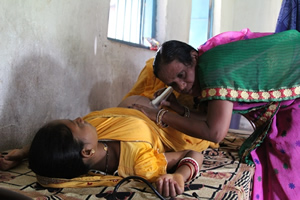
SPRING has developed a simple and easy-to-use toolkit for mapping the nutrition workforce within the health sector. The purpose of this assessment is to collect data on nutrition-specific actions performed by health workers at different levels with the health care service-delivery system. Data that are gathered include nutrition workforce size, composition, qualification, availability, gaps, and training status within different levels of the health facility. For example, the toolkit is designed to collect and compare data on various cadres of health workers regarding their training, responsibilities, and tasks. Similarly the tools are designed to calculate ratios of health providers responsible for nutrition actions to the target population.
Designed for program managers, human resource managers, capacity building and quality improvement consultants, and technical assistance providers from donors and Ministries of Health who work to improve delivery of nutrition actions and strengthen human resource capacity.
The toolkit then guides stakeholders in the development of tables and graphs that can be used for identifying training gaps related to nutrition-specific actions, improving planning and delivery of those actions, strengthening design and delivery of competency-based training programs, and advocating for nutrition workforce recruitment, deployment, and capacity-building.

It is organized in five sections, starting with an introduction to nutrition workforce mapping need and relevance. The second section of the toolkit includes a user’s guide that describes the methodology and process for workforce mapping. Section 3 includes the data collection tools, while Section 4 and 5 are job aids for data collection, presentation, and analysis. The data collection tools are available (above) in Microsoft Excel files that will automatically generate a number of tables for sharing with country stakeholders for discussion, planning, and advocacy.


